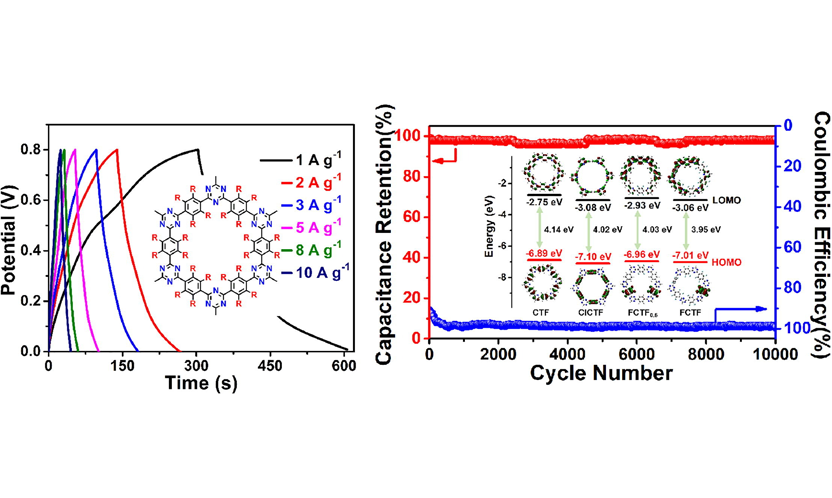Halogen-functionalized triazine-based organic frameworks towards high performance supercapacitors

Covalent triazine-based frameworks (CTFs) are promising capacitive storage polymers due to their porosity and structural controllability at the molecular or atomic level. However, the intrinsic low electron/ion conductivity and severe stacking effect between adjacent layers greatly impede their electrode performance in supercapacitors. Herein, we deploy a halogen-functionalized strategy to promote the electrochemical performances of CTFs. Theoretical calculation indicates a lower energy gap (Egap) of the halogen-functionalized CTF, implying facilitated electron transportation process and decreased internal resistance. Halogen-substitution is believed to further “lock” the interlayer space of two adjacent CTFs layers due to their atomic repelling effects which is benefit for the charge transfer process. A hierarchical micro-/mesoporous property results in a large specific surface area (SBET ~ 1345 m2 g−1) with abundant channels to the charges and electrons, thus providing more double layer capacitance to the CTFs. Consequently, among all the as-synthesized CTFs, the fluorinated CTF, i.e. FCTF possesses the highest energy storage capacitance of 379 F g−1 at 1 A g−1, excellent cycling stability (96.8%) and high Coulombic efficiency (up to 99.6%) after 10,000 cycles at 5 A g−1. FCTF (cathode) and activated carbon (anode) are then assembled into an asymmetric supercapacitor (ASC) which reaches a fine capacitance (148 F g−1) at 1 A g−1.
